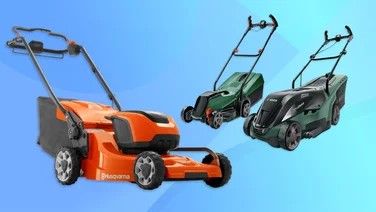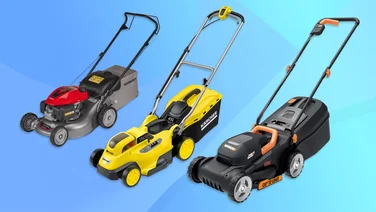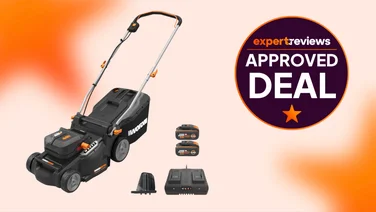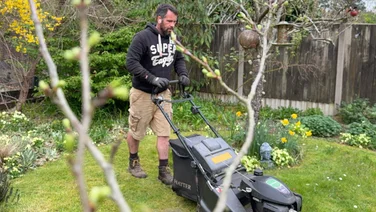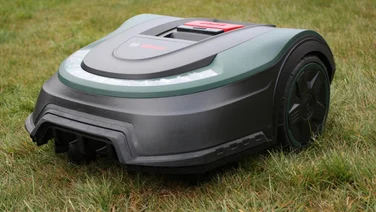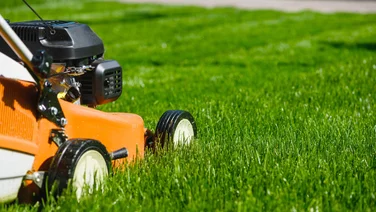To help us provide you with free impartial advice, we may earn a commission if you buy through links on our site. Learn more
- The short answer? Lawn mowers don’t like getting wet
- What to do if your mower gets soaked
- Electric corded mowers: Do not mix with rain
- Cordless (battery-powered) mowers: Not necessarily waterproof
- Petrol mowers: Surprisingly water-tolerant – to a point
- Ride-on mowers: They're mini tractors but they’re not aquatic
- How to store your mower properly
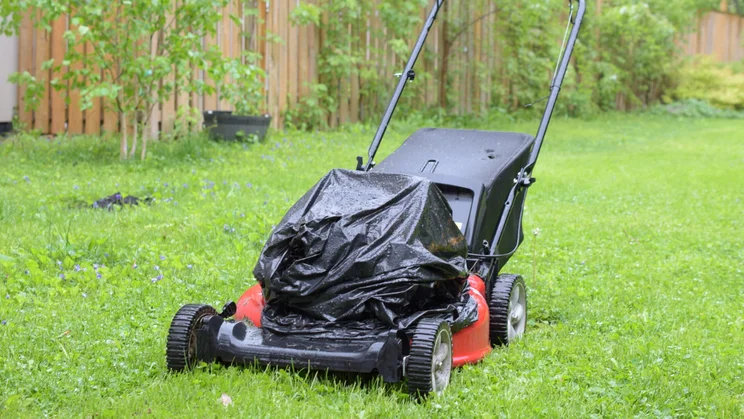
One minute you’re more than halfway through mowing the lawn, and the next, a biblical shower descends to wipe away that smug, self-satisfied grin. Do you stop mowing or is it safe to carry on regardless? Or maybe you’re wondering what to do because your lawn mower’s been left out in the rain. The question is what to do next.
Whether it’s rain, morning dew, or a mischievous child with a hosepipe, water and high-powered grass cutting appliances don’t mix. However, it’s the specific type of mower that makes all the difference between dangerous and simply ill-advised. All mowers – corded, cordless, petrol or sit-on – will last longer and give a better quality cut in dry conditions, but some types are more susceptible to water damage – or outright dangerous – than others.
Here we’ll walk you through what to do if your mower gets wet, when to worry (and when not to), and how to prevent soggy disasters in the first place.
The short answer? Lawn mowers don’t like getting wet
Water is not kind to motors, electric or otherwise, and it can also damage bearings and moving parts. It’s also very effective at causing corrosion. The key takeaway here is that you should store your mower in a dry shed or garage, and it’ll last longer if you clean and dry it carefully before putting it away in storage.
Always dry any excess water off with an old rag, and make the effort to scrub off wet grass with a brush before it turns into organic concrete – it’s far easier to remove all the grass residue while it’s damp. Keep your mower clean and dry, and it’ll work better and last longer.
What to do if your mower gets soaked
- Unplug or power off immediately – Always put safety first.
- Dry it thoroughly – Ensure that it’s unplugged and use old rags or towels to remove the worst.
- Check for water in key areas – Check any accessible areas: battery housing, air filter, petrol tank, electrics.
- Wait 24–48 hours – Let it completely dry out. Use a fan or dehumidifier to speed the process if necessary.
- Check the manual – Look for advice in the user manual – or call the manufacturer’s support line if you’re having specific issues.
Petrol mowers are more resilient than the other types, but few if any are designed to be soaked – and using them when wet can be unsafe and seriously shorten their lifespan. Here we’ll break down the differences between them all.
Electric corded mowers: Do not mix with rain
- Do not use a corded mower in wet conditions
- Do not place electrical cables on wet grass
- Allow all parts of the mower to dry if it gets wet
It’s bad form to ever mow wet grass – do so as an absolute last resort. As we’ve already explained in our Eight mistakes you’re making when mowing your lawn article, mowing wet grass means that your mower blades are more likely to rip and damage your grass. And the wet grass will make an almighty mess of your mower.
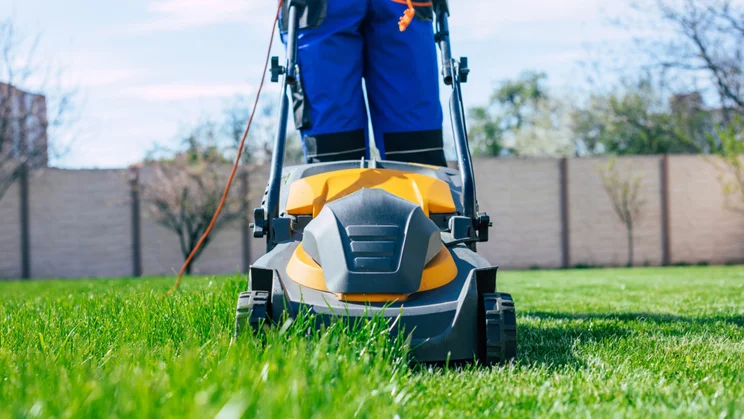
With a corded mower, however, it’s also a safety hazard. You should never use a corded mower on wet grass. Manufacturers will advise you, very sensibly, that you should never have electric cables lying on wet grass as it’s an accident waiting to happen. Stihl’s user manual states this unequivocally: Route the extension cable on dry ground.
The safety warnings in the manufacturers’ user manuals are quite clear. Read the small print in one of Flymo’s corded mower manuals and it quite clearly states: Do not use under wet conditions. Do not use on wet grass. Unless your mower is specifically rated as waterproof, then it’s safe to say that you shouldn’t even consider it.
Stihl’s advice for its corded mowers is even more emphatic: The lawn mower is not waterproof. Working in the rain or in a damp environment may result in electric shock. This may result in injury to the user and damage to the lawn mower. Do not work in the rain or in a damp environment. Do not mow wet grass.
If you just so happen to get caught in a downpour, or accidentally leave your mower out in the rain, then you need to get it unplugged and under cover as soon as possible. Unplug it immediately and let it dry thoroughly before attempting to use it again. If the plug and sockets (or extension cable, if you’re using one) are wet, then consider whether you can turn it off from a dry switch further up the circuit, or as a last resort turn the socket off at the fuse box. Why? Because water can cause short circuits, electric shocks, and tripped fuses – and the results can be deadly.
In the case of a really thorough soaking, then you may need to enlist the assistance of a dehumidifier, or bring the mower into a warm, dry space for a few days until it’s thoroughly dried out.
Cordless (battery-powered) mowers: Not necessarily waterproof
- Only mow in wet weather if your mower is rated to be waterproof
- Ideally, avoid using any cordless mower in wet conditions
- If it gets wet, dry the mower and all removable parts thoroughly before next use
Cordless mowers don’t have a cable to worry about, which obviously reduces the risk of electrocution from dragging a mains cable across wet grass, but that doesn’t necessarily make them waterproof. Lithium-ion batteries, circuit boards, motors, bearings and metal parts inside the housing can still be water damaged – and not all cordless mowers are waterproof.
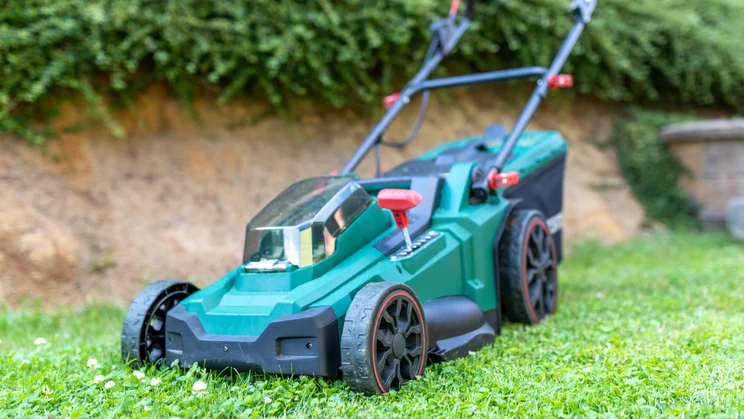
As ever, cutting in wet weather is going to make a mess of your mower and leave you scraping off clumps of wet sticky grass, but only some mowers are actually officially waterproof. Check the user manual for your specific model and heed the advice. If it uses the imperative phrasing Do not rather than the advisory tone of Avoid, then pay attention and do what it says. You’ll be endangering yourself and voiding your warranty if you ignore it.
Even mowers which claim to be fully waterproof don’t offer a carte blanche approach to moist mowing. For instance, Honda’s high-end Honda HRX cordless mower is rated as waterproof – the marketing photos even show it being sprayed with a sprinkler attachment on a hose – but the manual is quite clear to avoid water if possible, stating: Do not use forced water and avoid wetting the motor or the electrical components. And it also, very sensibly, counsels against mowing in damp conditions if at all possible: Avoid mowing wet grass or when it is raining.
In short, if your cordless mower gets wet:
- Switch it off and remove the battery
- Dry both mower and battery thoroughly (ideally in a dry shed or garage)
- Wait at least 24 hours before restarting – and be attentive to any unusual operational behaviour or noise
Petrol mowers: Surprisingly water-tolerant – to a point
- If you have to mow in damp conditions, a petrol mower with sharp blades is a must
- Beware: water ingress may prevent your mower from starting
- Dry and clean your mower thoroughly if you’ve used it in wet conditions
Petrol mowers are the workhorses that professional gardeners – or those of us with big gardens – need to get the job done. They’re usually tough old things, and they’ll shrug off a bit of drizzle and – with suitably sharp blades – make light work of even wet grass.

That said, it’s still not ideal to use any mower in wet conditions – you’ll get an inferior cut and a dirty, damp mower for starters. And if you accidentally leave your petrol mower out in heavy rain or cut wet grass regularly, you’re asking for problems. If water gets in the starter motor or sparkplug, or penetrates right into the motor, then you may be faced with a hefty repair bill when you find that you can’t get them started again.
If your petrol mower gets caught in a downpour:
- Let it dry out before starting again
- Check the air filter and spark plug for signs of moisture
- If water has worked its way into the fuel tank or lines, you may need drain and refill it
Ride-on mowers: They’re mini tractors but they’re not aquatic
- Avoid mowing in wet conditions, as a ride-on mower may skid and slip
- Discharge chutes may get clogged with wet grass
- Make sure to clean the cutting deck thoroughly after use in moist conditions
Ride-on mowers are built for serious work, but they’re not designed to sit in puddles – or tackle the lawn during a downpour. All of them have motors, engines, electrical systems, belts and components that won’t take kindly to long-term moisture exposure. Given how expensive they are, it pays to look after them and avoid giving them an unnecessary soaking.

Even fancy ride-on mowers from brands such as John Deere are not designed to be used in wet weather. This isn’t just because you’ll get a bad quality cut, or cause damage to your expensive steed, however – it’s also hazardous to drive a ride-on mower on wet grass. John Deere’s user manuals for its 100 Series Lawn Tractors clearly state that: Do not mow on wet grass. Tires can slip on wet grass even if the brakes are working normally.
If your ride-on mower gets caught in a bit of drizzle, however, then it’s really not worth worrying too much. Park it somewhere dry or at the very least pop it under a tarp to keep the worst of the weather at bay. That said, if you’ve been mowing slightly damp, sticky grass, then you’ll still be advised to hook up your hose to the cutting deck and give the underside a thorough sluicing to remove all the caked on cuttings.
How to store your mower properly
The best way to avoid water damage is to keep your mower somewhere dry. A garage, shed or storage box will do the trick – and if your shed or storage area is prone to the odd leak, then just throw a waterproof tarp over the top.
If you’re short on storage space, one option is a dedicated waterproof mower cover. These retail for around £10–£30. Just make sure to let your mower cool down before packing it away, especially for petrol models.

